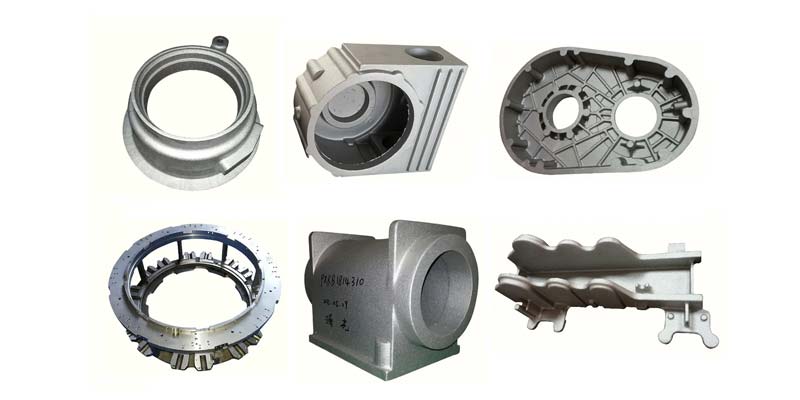- Contact Innally, Let you purchase forgings in China more favorable prices, products more assured!
- Hotline:+(86)15038323776 Email:innally@innally.com
Material selection and performance optimization of train forging
- Category: Stainless steel forging, Thermal forging
- |
- Date: 11/12/2023
material selection and performance optimization of train forgings are of great significance to improve its performance and quality. Through comprehensive consideration of material properties, processing properties and economic factors, selecting the right material is the key to manufacturing high-quality train forging. At the same time, the use of advanced processing technology and heat treatment technology can further optimize the performance of the material, improve the quality and reliability of the forging.
Product Details
Train forging is an important part in the manufacture of railway rolling stock, and its material selection and performance optimization play a crucial role in the safety and stability of train operation. This paper will discuss the material selection and performance optimization of train forgings.
First, material selection
The material selection of train forging is directly related to its performance and quality. When choosing materials, you need to consider the following factors:
Strength and toughness: Train forgings need to withstand a variety of complex and harsh environments, such as high speed, heavy load, high temperature, low temperature, etc. Therefore, it is crucial to choose materials with sufficient strength and toughness. High strength steel and alloy steel are commonly used materials.

Corrosion resistance: Train forgings will be subjected to corrosive media during operation, such as rain and snow, salt spray, atmosphere, etc. Therefore, it is necessary to choose materials with good corrosion resistance. Stainless steel and weathering steel are commonly used materials.
Machining performance: Train forgings require a variety of processing operations, such as forging, cutting, drilling, etc. Therefore, it is important to choose materials with good processing properties. Mild steel and aluminum alloy are commonly used materials.
Economy: Under the premise of meeting the performance requirements, the selection of low-cost materials can reduce manufacturing costs. Carbon steel and cast iron are commonly used as economical materials.
Second, performance optimization
In order to improve the performance and quality of train forgings, the following optimization measures are required:
Optimization design: According to the actual working conditions and use requirements, the structure of the train forging is optimized. The strength and stability of forgings can be improved by improving the structural design and adopting strengthening measures.
Heat treatment process optimization: Reasonable heat treatment process can significantly improve the strength and toughness of train forgings. By adjusting the heating temperature, holding time, cooling speed and other parameters, the best material structure and performance can be obtained.
Surface treatment: Coating or chemical heat treatment such as carburizing and nitriding on the surface of train forgings can further improve its corrosion resistance and wear resistance.
Process optimization: By optimizing the processing process flow, controlling the processing parameters, reducing the processing defects and stress concentration, the quality and performance stability of the train forging can be improved.
Alloying element addition: Adding an appropriate amount of alloying element to the material can improve the performance of the material. For example, adding elements such as chromium and nickel can improve corrosion resistance, and adding elements such as manganese and silicon can improve strength and hardness.
Iii. Case analysis
Taking the manufacturing of a certain type of train axle as an example, its material is selected as high-strength steel, and after strict heat treatment and processing process, its performance has been significantly improved. During operation, the axle shows good strength and toughness and successfully withstands a variety of complex and harsh environmental conditions. At the same time, reasonable surface treatment measures also ensure that it has good corrosion resistance and wear resistance.
In short, material selection and performance optimization of train forgings are of great significance to improve its performance and quality. Through comprehensive consideration of material properties, processing properties and economic factors, selecting the right material is the key to manufacturing high-quality train forging. At the same time, the use of advanced processing technology and heat treatment technology can further optimize the performance of the material, improve the quality and reliability of the forging.
nannan
INNALLY mainly provides you with various types of cast and forged parts products. Welcome your inquiries! innally@innally.com
Related Products
Search
Forging center
- Steel forgings
- Aluminium alloy forging
- Titanium alloy forging
- Stainless steel forging
- Copper forging
- Automotive forgings
- Locomotive forging
- Bicycle forgings
- Motorcycle forging
- Rigging and fasteners
- Bearing forging
- Electric power fittings
- Marine forging
- Mechanical forgings for metalworking
- Mining machinery forgings
- Marine engineering forgings
- Construction machinery forgings
Popular product

© 2025. All Rights Reserved.






